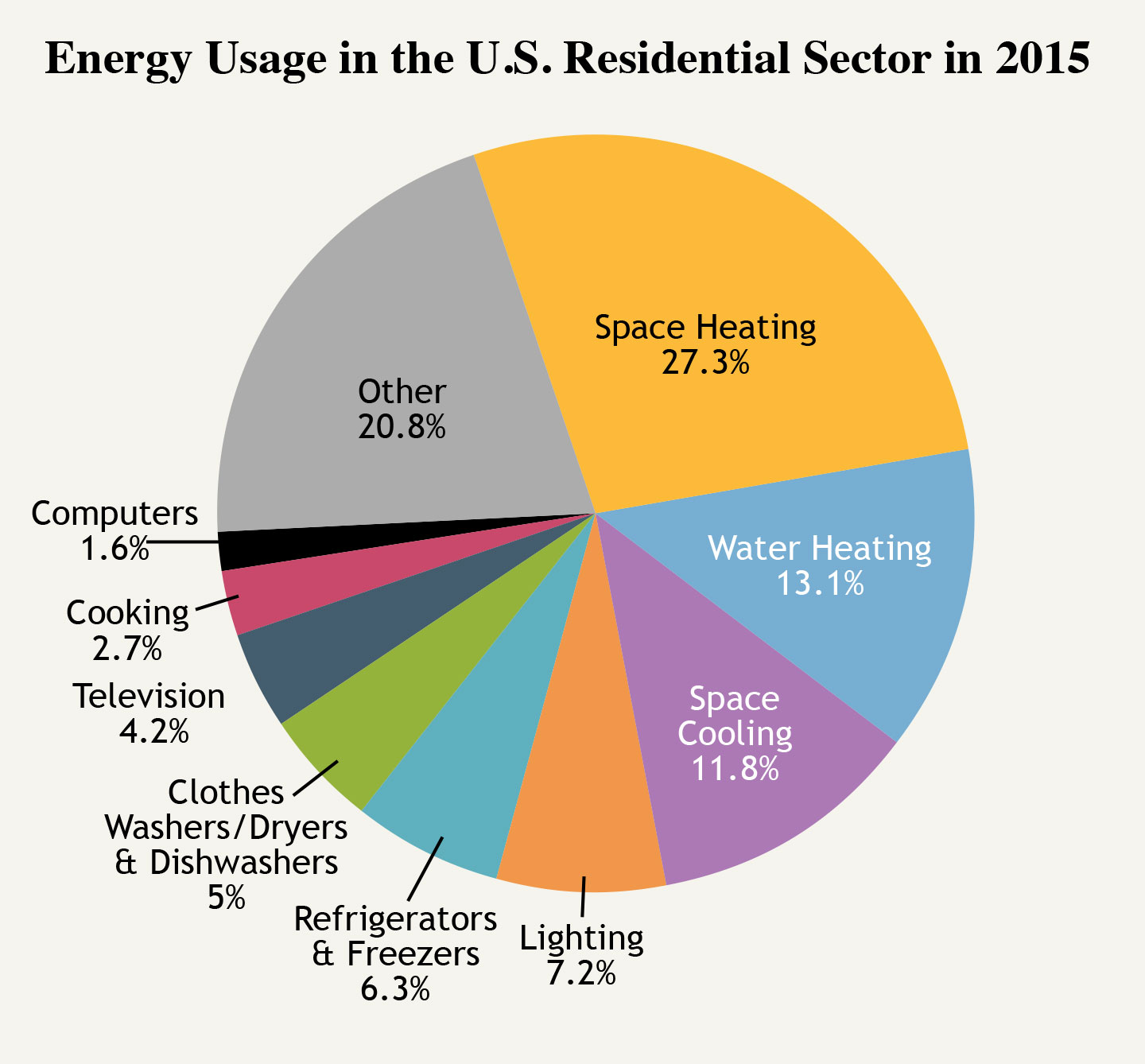Home & Work
© PhotoDisc
Home & Work
We use energy in homes and commercial buildings in similar ways. We keep rooms at a comfortable temperature, illuminate our spaces, heat water for bathing and laundry, and depend on computers, copiers, appliances, and other technologies. So perhaps it is not surprising that in 2015, 40% of all the energy consumed in the United States went to powering homes and commercial buildings.
In 2015, 40% of all the energy consumed in the United States went to powering homes and commercial buildings.
Within that category, the amount of energy devoted to specific uses has changed during the past 15 years, often dramatically. For decades, more than half of all residential energy use went to space heating and cooling; in 1993, it accounted for nearly 60%. But U.S. Energy Information Administration (EIA) data show that by 2009 that share had dropped to 48%. And in the period 1993 to 2009, energy for appliances, electronics, and lighting rose from 24% to 35%, owing to the proliferation of appliances, as well as trends toward larger televisions and other devices.
According to the EIA, total residential energy consumption has varied between 16.0 and 20.8 quads during the past 30 years—about one-fifth of total U.S. energy consumption from all sources (approximately 98 quads in 2015). But during the same period, the U.S. population grew by 35.6% while the number of homes grew by about 40%. And U.S. homes built since 1990 are on average 27% larger than homes built in earlier decades.
In 2015, natural gas and electricity were tied for the leading source of energy used in homes, with each at 42%. The same two energy sources predominate in commercial buildings, where electricity (53%) and natural gas (39%) provide nearly all the energy consumed. The commercial sector includes a broad array of building types, including offices, stores, sports arenas, schools, shopping malls, hotels, and hospitals. The energy needs for these different buildings vary but when viewed as a whole, more than half of the energy used in commercial buildings goes to just two functions: heating (36%) and lighting (21%). Within this sector, retail stores and service buildings use the most total energy (20%), followed by office buildings (17%) and schools (13%).
Efficiency of energy use in commercial buildings has also been impacted by minimum efficiency standards for equipment and products that use energy, such as heating and cooling components, light fixtures, and more.
Following the advent of state and then national appliance efficiency standards in the 1980s, the nation realized dramatic improvements in the energy efficiency of new refrigerators, air conditioners, clothes washers, and other appliances. In the 30 years from 1972 to 2001, for example, the average electricity use of new refrigerators sold in the United States declined by a remarkable 70%.

